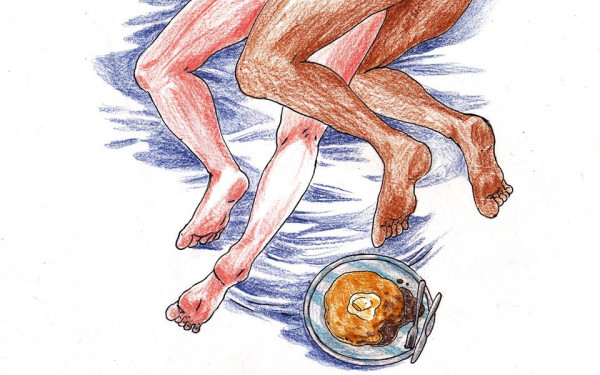Sustainable Sex
So why should you care? Well, despite being a pretty natural thing, sex isn’t actually very sustainable. It’s not the act itself that carries the problems, but rather the consequences and the conditions under which we have sex—many of which we’ve actually created.
Take sex toys for example. It’s no secret that plastic isn’t great for the environment but next time you’re choosing a sex toy take this into consideration: in children’s toys it’s illegal to use more than 0.1 per cent of a group of chemical compounds called phtalates, which are used to soften hard plastics, because of links to infertility, birth defects, and hormone imbalances. Phtalates also don’t chemically bond very well to plastics so they’re commonly and easily released into the environment. Sound like something you want to stick up your ass? If not, you should know that you’ll find phtalates in most sex toys as they’re hardly as regulated.
The good news is that many companies have started producing sustainable sex toys, which are body-safe, animal product free, powered by rechargeable batteries and come in recyclable packaging! There’s even a solar-powered bullet. Plus, most of these are made of wood (repurposed and varnished), unbreakable glass or silicone, so they can last a lifetime.
In case you’re wondering, biodegradable sex toys don’t exist because there’d be the risk of them beginning to decompose while still inside you. If you’re really set on the idea, use a cucumber. If you REALLY want to be sustainable, eat it afterwards.
Latex condoms and dental dams also create issues for the environment. Latex is biodegradable, but condoms and dental dams are rarely made of 100 per cent latex and the lubricants and powders on packaged latex products to prevent deterioration actually affect biodegradability.
It’s also estimated that these products take several years to a decade to decompose, and, at the rates that people are using them, we’re not making much progress. Polyurethane condoms are synthetic so they won’t decompose, and while lambskin condoms will, they don’t protect against STIs and they’re made of lamb intestines so if the goal is to be green, using animal products is pretty much one of the worst things you can do.
If that isn’t enough for you, individual condom and dental dam packaging isn’t biodegradable or recyclable either. So overall, condoms and dental dams aren’t too eco-sexy… but then again, neither are STIs and unwanted pregnancies.
There are few things less sustainable than creating a duplicate of yourself to consume, pollute and essentially double your carbon footprint. So in avoiding making a baby, hormonal methods of contraception might look pretty good. The pill, however, also brings major environmental concerns. Not only does it regulate women’s cycles in a not-so-natural way and have note-worthy side effects, it also causes women to release estrogen into water when they go to the bathroom. This, in turn, leads to increased levels of estrogen in human and water life populations, since most pharmaceuticals make it through treatment processing systems.
A similar thing happens with the antibiotics used to treat STIs (among other things). About 90 per cent of most antibiotics aren’t absorbed in the system, so they make their exit into our water leading to water pollution and antibiotic resistance.
If you’re really committed to going green, consider the all-natural, fertility awareness method as birth control. But I’d only recommend even considering this if you’re in a monogamous sexual relationship, since it doesn’t protect against STIs, and if you’re incredibly organized with a foolproof schedule.
So ultimately, what’s the most eco-friendly way to have sex? Well, with yourself. No but really, it’s looking like the healthiest and most eco-friendly way to have an orgasm is by getting yourself off with your hand. So go ahead and have a guilt-free orgasm!
Send questions to sexpancakes.thelink@gmail.com and check out “Sex & Pancakes” on Facebook.


_600_832_s.png)


